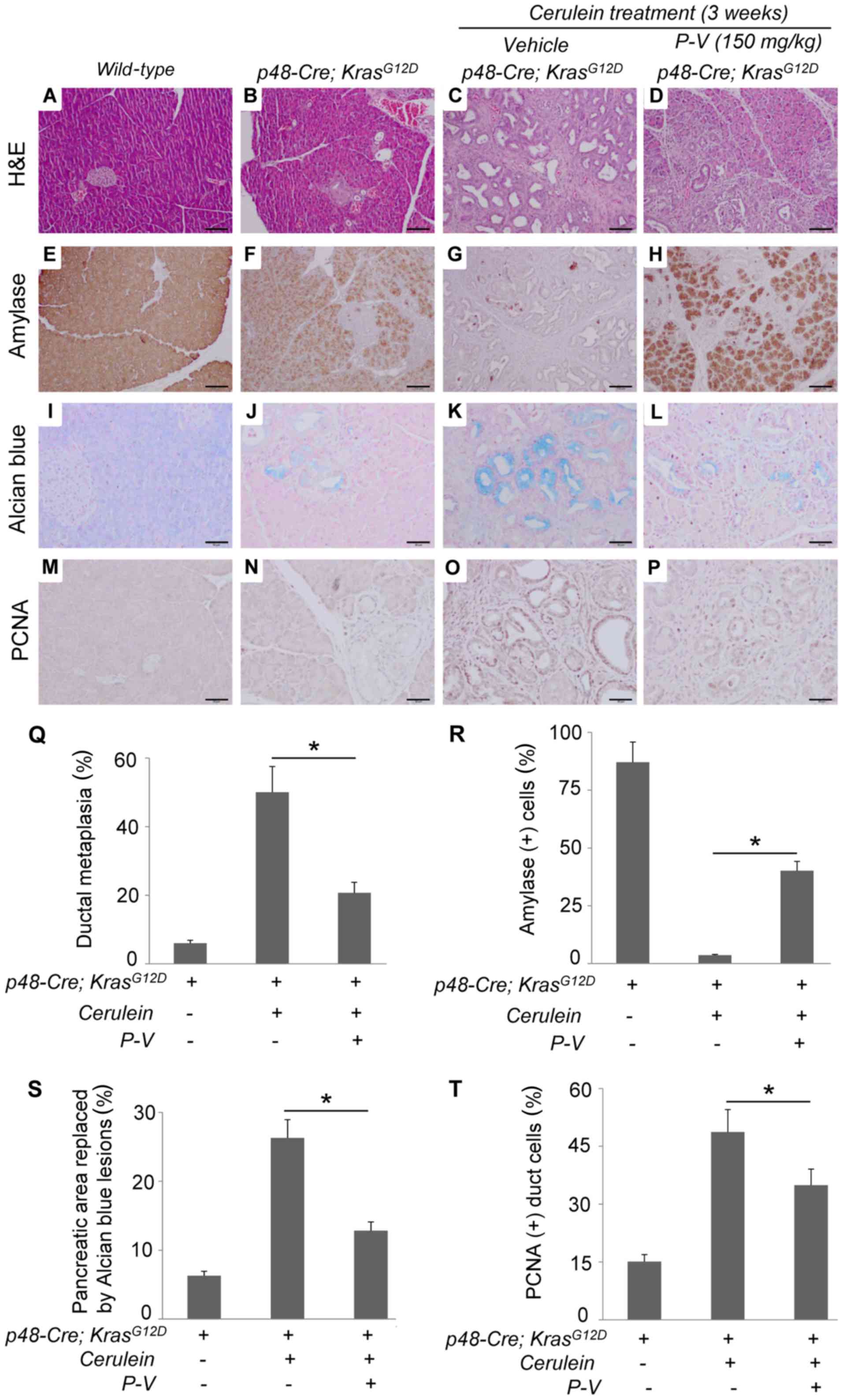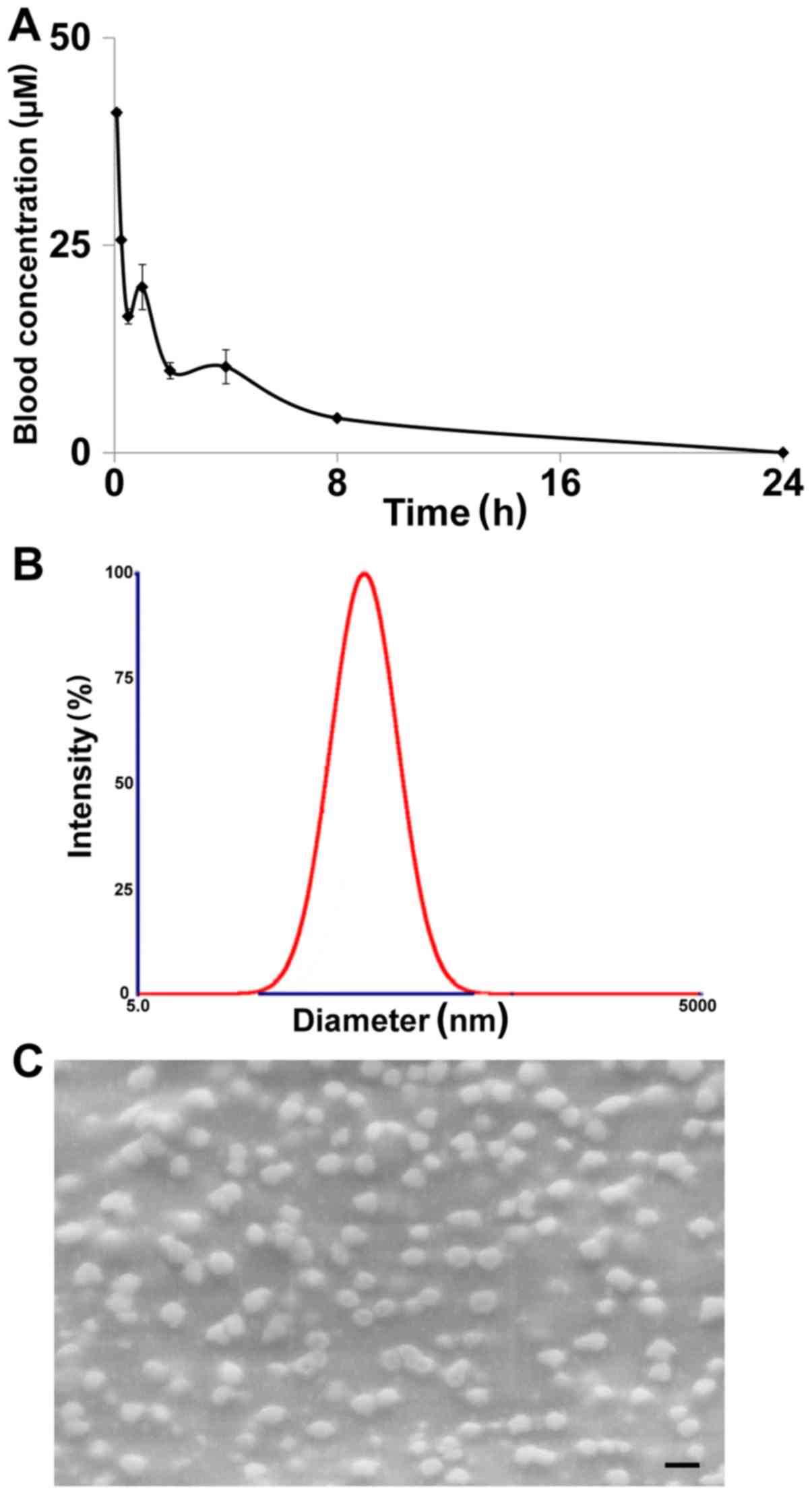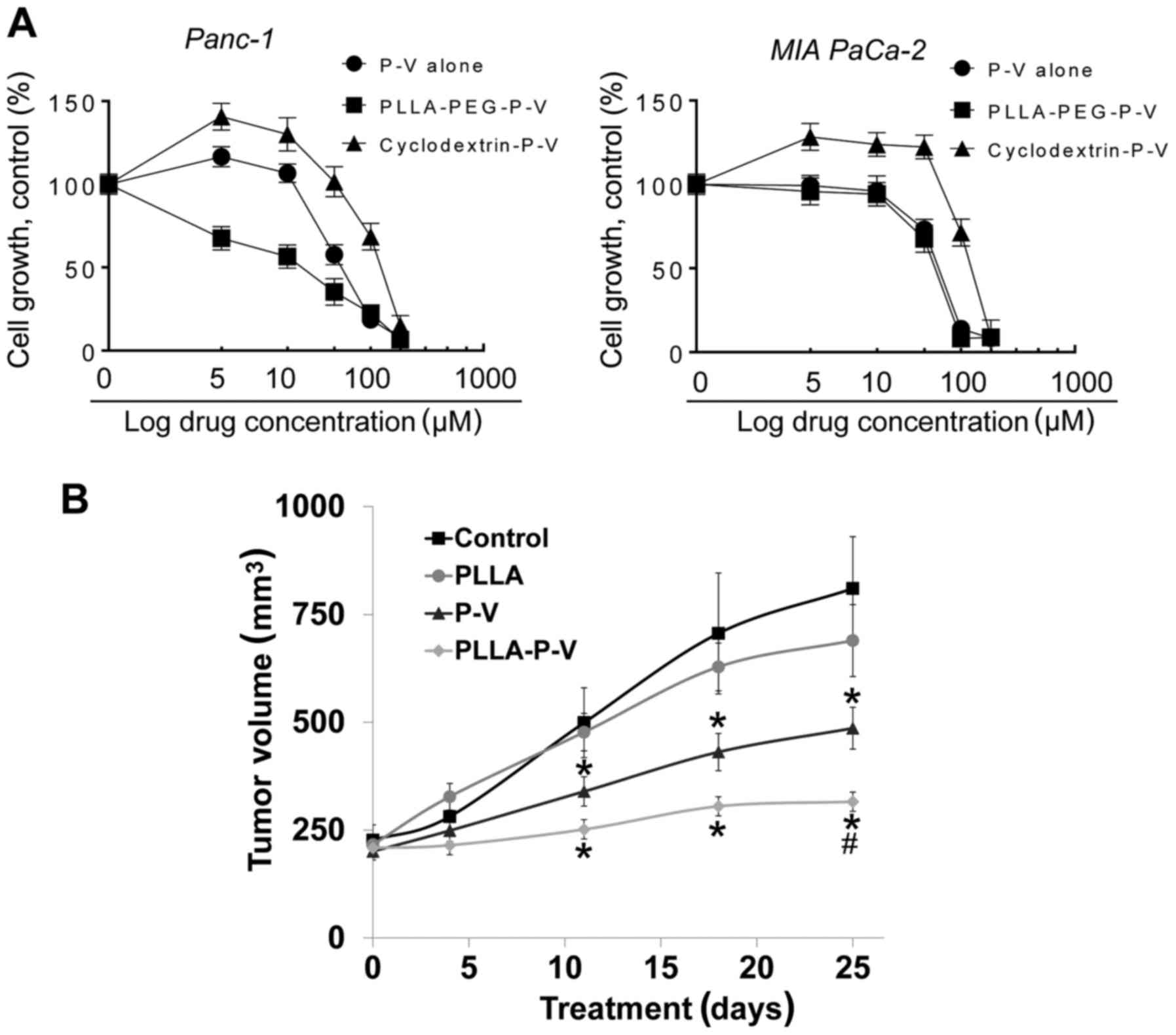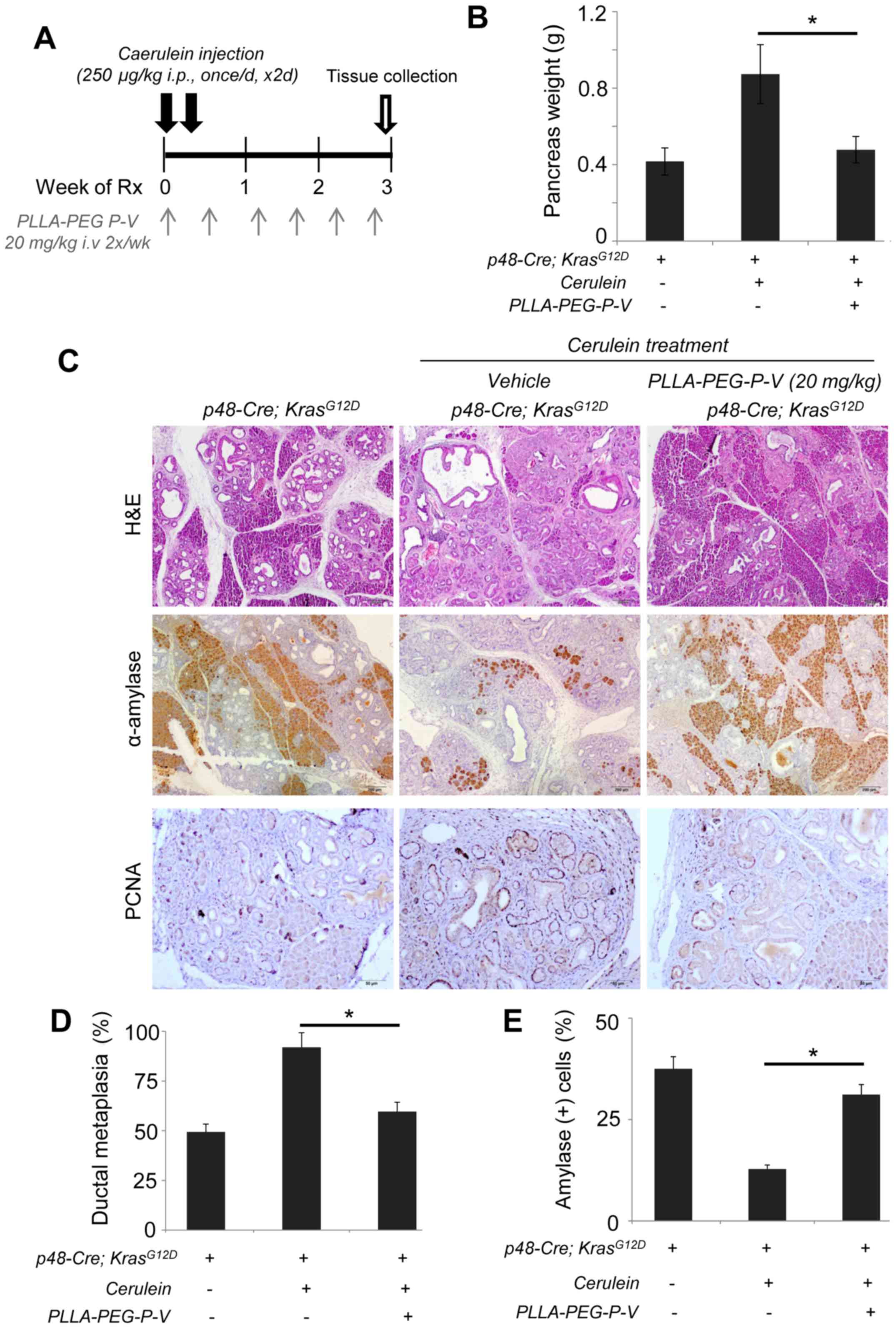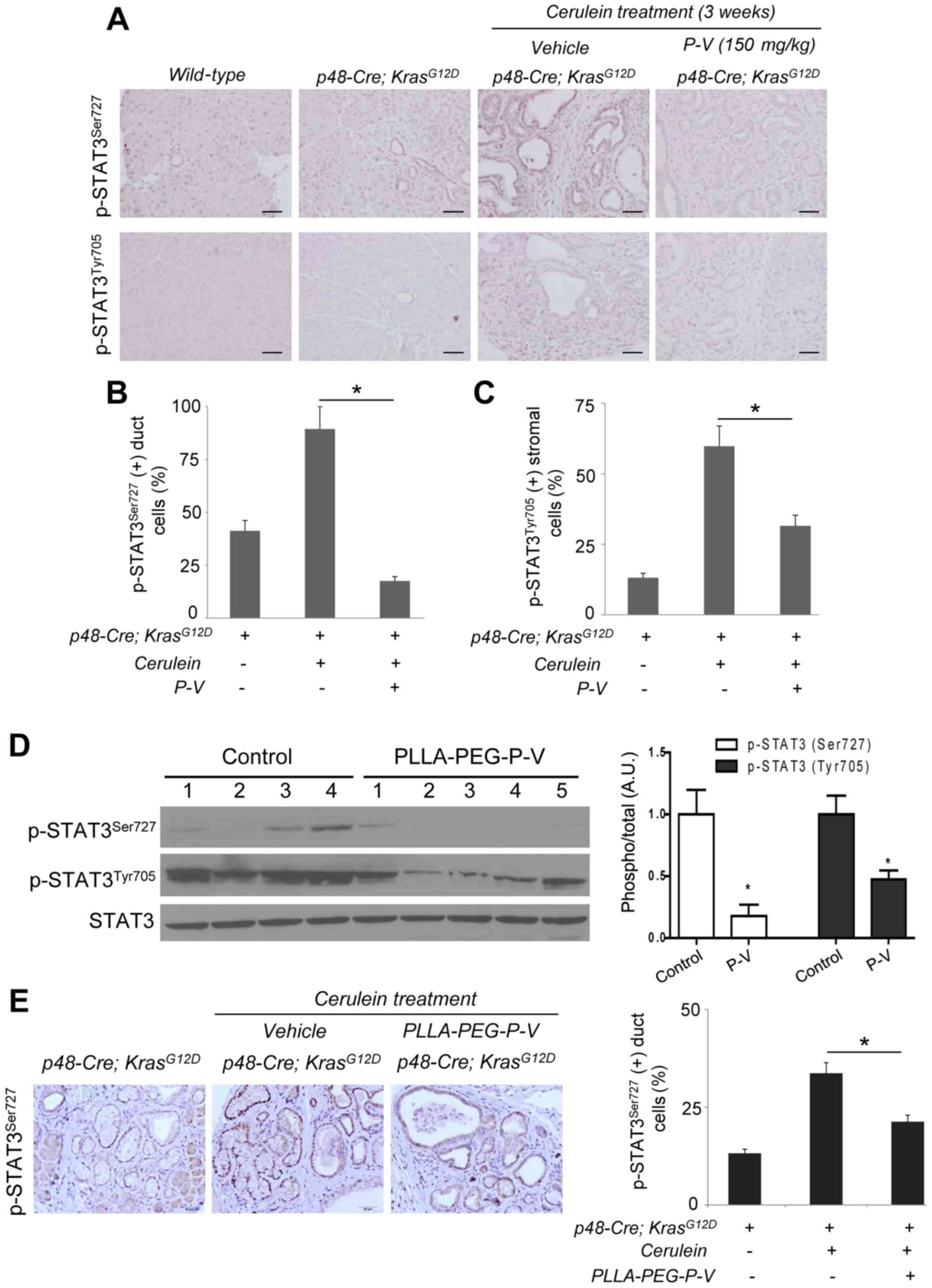|
1
|
Siegel RL, Miller KD and Jemal A V1:
Cancer statistics, 2016. CA Cancer J Clin. 66:7–30. 2016.
View Article : Google Scholar : PubMed/NCBI
|
|
2
|
Huang L, Mackenzie GG, Sun Y, Ouyang N,
Xie G, Vrankova K, Komninou D and Rigas B: Chemotherapeutic
properties of phospho-nonsteroidal anti-inflammatory drugs, a new
class of anticancer compounds. Cancer Res. 71:7617–7627. 2011.
View Article : Google Scholar : PubMed/NCBI
|
|
3
|
Mackenzie GG, Bartels LE, Xie G,
Papayannis I, Alston N, Vrankova K, Ouyang N and Rigas B: A novel
Ras inhibitor (MDC-1016) reduces human pancreatic tumor growth in
mice. Neoplasia. 15:1184–1195. 2013. View Article : Google Scholar : PubMed/NCBI
|
|
4
|
Mackenzie GG, Sun Y, Huang L, Xie G,
Ouyang N, Gupta RC, Johnson F, Komninou D, Kopelovich L and Rigas
B: Phospho-sulindac (OxT-328), a novel sulindac derivative, is safe
and effective in colon cancer prevention in mice. Gastroenterology.
139:1320–1332. 2010. View Article : Google Scholar : PubMed/NCBI
|
|
5
|
Mackenzie GG, Huang L, Alston N, Ouyang N,
Vrankova K, Mattheolabakis G, Constantinides PP and Rigas B:
Targeting mitochondrial STAT3 with the novel phospho-valproic acid
(MDC-1112) inhibits pancreatic cancer growth in mice. PLoS One.
8:e615322013. View Article : Google Scholar : PubMed/NCBI
|
|
6
|
Corcoran RB, Contino G, Deshpande V,
Tzatsos A, Conrad C, Benes CH, Levy DE, Settleman J, Engelman JA
and Bardeesy N: STAT3 plays a critical role in KRAS-induced
pancreatic tumorigenesis. Cancer Res. 71:5020–5029. 2011.
View Article : Google Scholar : PubMed/NCBI
|
|
7
|
Fukuda A, Wang SC, Morris JP IV, Folias
AE, Liou A, Kim GE, Akira S, Boucher KM, Firpo MA, Mulvihill SJ, et
al: Stat3 and MMP7 contribute to pancreatic ductal adenocarcinoma
initiation and progression. Cancer Cell. 19:441–455. 2011.
View Article : Google Scholar : PubMed/NCBI
|
|
8
|
Lesina M, Kurkowski MU, Ludes K, Rose-John
S, Treiber M, Klöppel G, Yoshimura A, Reindl W, Sipos B, Akira S,
et al: Stat3/Socs3 activation by IL-6 transsignaling promotes
progression of pancreatic intraepithelial neoplasia and development
of pancreatic cancer. Cancer Cell. 19:456–469. 2011. View Article : Google Scholar : PubMed/NCBI
|
|
9
|
Scholz A, Heinze S, Detjen KM, Peters M,
Welzel M, Hauff P, Schirner M, Wiedenmann B and Rosewicz S:
Activated signal transducer and activator of transcription 3
(STAT3) supports the malignant phenotype of human pancreatic
cancer. Gastroenterology. 125:891–905. 2003. View Article : Google Scholar : PubMed/NCBI
|
|
10
|
Buettner R, Mora LB and Jove R: Activated
STAT signaling in human tumors provides novel molecular targets for
therapeutic intervention. Clin Cancer Res. 8:945–954.
2002.PubMed/NCBI
|
|
11
|
Sahu RP and Srivastava SK: The role of
STAT-3 in the induction of apoptosis in pancreatic cancer cells by
benzyl isothiocyanate. J Natl Cancer Inst. 101:176–193. 2009.
View Article : Google Scholar : PubMed/NCBI
|
|
12
|
Mattheolabakis G, Rigas B and
Constantinides PP: Nanodelivery strategies in cancer chemotherapy:
Biological rationale and pharmaceutical perspectives. Nanomedicine
(Lond). 7:1577–1590. 2012. View Article : Google Scholar
|
|
13
|
Soppimath KS, Aminabhavi TM, Kulkarni AR
and Rudzinski WE: Biodegradable polymeric nanoparticles as drug
delivery devices. J Control Release. 70:1–20. 2001. View Article : Google Scholar : PubMed/NCBI
|
|
14
|
Brigger I, Dubernet C and Couvreur P:
Nanoparticles in cancer therapy and diagnosis. Adv Drug Deliv Rev.
54:631–651. 2002. View Article : Google Scholar : PubMed/NCBI
|
|
15
|
Mattheolabakis G, Taoufik E, Haralambous
S, Roberts ML and Avgoustakis K: In vivo investigation of tolerance
and antitumor activity of cisplatin-loaded PLGA-mPEG nanoparticles.
Eur J Pharm Biopharm. 71:190–195. 2009. View Article : Google Scholar
|
|
16
|
Wei D, Le X, Zheng L, Wang L, Frey JA, Gao
AC, Peng Z, Huang S, Xiong HQ, Abbruzzese JL, et al: Stat3
activation regulates the expression of vascular endothelial growth
factor and human pancreatic cancer angiogenesis and metastasis.
Oncogene. 22:319–329. 2003. View Article : Google Scholar : PubMed/NCBI
|
|
17
|
Deer EL, González-Hernández J, Coursen JD,
Shea JE, Ngatia J, Scaife CL, Firpo MA and Mulvihill SJ: Phenotype
and genotype of pancreatic cancer cell lines. Pancreas. 39:425–435.
2010. View Article : Google Scholar : PubMed/NCBI
|
|
18
|
Sun Y and Rigas B: The thioredoxin system
mediates redox-induced cell death in human colon cancer cells:
Implications for the mechanism of action of anticancer agents.
Cancer Res. 68:8269–8277. 2008. View Article : Google Scholar : PubMed/NCBI
|
|
19
|
Mackenzie GG, Queisser N, Wolfson ML,
Fraga CG, Adamo AM and Oteiza PI: Curcumin induces cell-arrest and
apoptosis in association with the inhibition of constitutively
active NF-kappaB and STAT3 pathways in Hodgkin's lymphoma cells.
Int J Cancer. 123:56–65. 2008. View Article : Google Scholar : PubMed/NCBI
|
|
20
|
Mattheolabakis G, Papayannis I, Yang J,
Vaeth BM, Wang R, Bandovic J, Ouyang N, Rigas B and Mackenzie GG:
Phospho-aspirin (MDC-22) prevents pancreatic carcinogenesis in
mice. Cancer Prev Res. 9:624–634. 2016. View Article : Google Scholar
|
|
21
|
Mackenzie GG, Ouyang N, Xie G, Vrankova K,
Huang L, Sun Y, Komninou D, Kopelovich L and Rigas B:
Phospho-sulindac (OxT-328) combined with difluoromethylornithine
prevents colon cancer in mice. Cancer Prev Res (Phila).
4:1052–1060. 2011. View Article : Google Scholar
|
|
22
|
Fogar P, Greco E, Basso D, Habeler W,
Navaglia F, Zambon CF, Tormen D, Gallo N, Cecchetto A, Plebani M,
et al: Suicide gene therapy with HSV-TK in pancreatic cancer has no
effect in vivo in a mouse model. Eur J Surg Oncol. 29:721–730.
2003. View Article : Google Scholar : PubMed/NCBI
|
|
23
|
Freeman JW, Mattingly CA and Strodel WE:
Increased tumorigenicity in the human pancreatic cell line MIA
PaCa-2 is associated with an aberrant regulation of an IGF-1
autocrine loop and lack of expression of the TGF-beta type RII
receptor. J Cell Physiol. 165:155–163. 1995. View Article : Google Scholar : PubMed/NCBI
|
|
24
|
Mattheolabakis G, Papayannis I, Yang J,
Vaeth BM, Wang R, Bandovic J, Ouyang N, Rigas B and Mackenzie GG:
Phospho-aspirin (MDC-22) prevents pancreatic carcinogenesis in
mice. Cancer Prev Res (Phila). 9:624–634. 2016. View Article : Google Scholar
|
|
25
|
Li J and Saif MW: Advancements in the
management of pancreatic cancer. JOP. 10:109–117. 2009.PubMed/NCBI
|
|
26
|
Morris JP IV, Wang SC and Hebrok M: KRAS,
Hedgehog, Wnt and the twisted developmental biology of pancreatic
ductal adenocarcinoma. Nat Rev Cancer. 10:683–695. 2010. View Article : Google Scholar : PubMed/NCBI
|
|
27
|
Zhan C, Gu B, Xie C, Li J, Liu Y and Lu W:
Cyclic RGD conjugated poly(ethylene glycol)-co-poly(lactic acid)
micelle enhances paclitaxel anti-glioblastoma effect. J Control
Release. 143:136–142. 2010. View Article : Google Scholar : PubMed/NCBI
|
|
28
|
Ahmed F, Pakunlu RI, Srinivas G, Brannan
A, Bates F, Klein ML, Minko T and Discher DE: Shrinkage of a
rapidly growing tumor by drug-loaded polymersomes: pH-triggered
release through copolymer degradation. Mol Pharm. 3:340–350. 2006.
View Article : Google Scholar : PubMed/NCBI
|
|
29
|
Kim SC, Kim DW, Shim YH, Bang JS, Oh HS,
Wan Kim S and Seo MH: In vivo evaluation of polymeric micellar
paclitaxel formulation: toxicity and efficacy. J Control Release.
72:191–202. 2001. View Article : Google Scholar : PubMed/NCBI
|
|
30
|
Baumgart S, Chen NM, Siveke JT, König A,
Zhang JS, Singh SK, Wolf E, Bartkuhn M, Esposito I, Heßmann E, et
al: Inflammation-induced NFATc1-STAT3 transcription complex
promotes pancreatic cancer initiation by KrasG12D.
Cancer Discov. 4:688–701. 2014. View Article : Google Scholar : PubMed/NCBI
|















